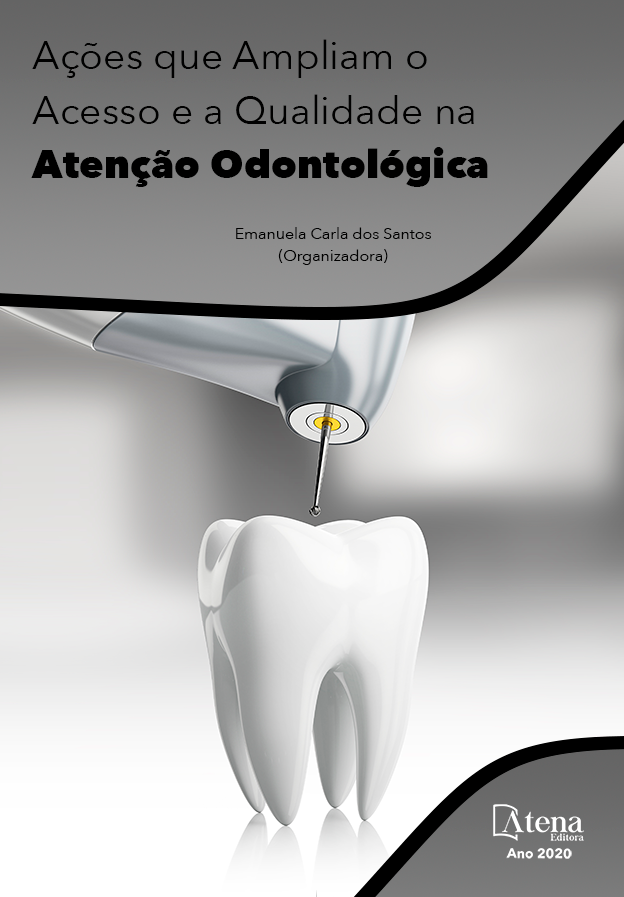
AVALIAÇÃO DA SIMILARIDADE DE COR DE RESINAS COMPOSTAS EM RELAÇÃO A ESCALA VITTA CLASSICAL
Introdução: A correspondência de cor entre materiais estéticos e a estrutura dental é, certamente, o parâmetro mais utilizado pelos pacientes para a avaliação da qualidade dos tratamentos estéticos realizados, influenciando decisivamente no julgamento da competência profissional e no grau de satisfação do paciente ao final do tratamento. Objetivo: Identificar dentre as resinas compostas, quais apresentam maior correspondência de cor com a escala Vita Classical; Método: Foram constituídos 6 grupos; a resina Tetric N-Flow® cor A1 foi utilizada como controle claro e a Tetric N-Flow® cor A4, como controle escuro e 4 resinas cor A2D (Oplais, EmpressDirect, Esthelite e Z350). Para cada material, foram confeccionados dez corpos de prova. A leitura de cada corpo de prova foi realizada através de um espectrofotômetro e, em seguida, anotado o padrão CIELab, além da leitura através do matiz e croma. Uma avalição visual foi realizada entre 4 avaliadores para que pudessem verificar as resinas em relação aos padrões claro e escuro. Resultados: A tonalidade de cada espécime apresentou baixa percentagem de correspondência, em relação a cor A2 da escala Vita. Os valores de ΔE dos grupos e da referência A2 da escala Vita foram submetidos à análise estatística com 5% de significância. A ANOVA resultou em diferenças estatisticamente significantes para todos os grupos amostrais (p < 0,05). O teste de Tukey demonstrou não existir correspondência de cor entre os materiais analisados e a tonalidade de referência da escala Vita. Conclusão: não houve correspondência de cor com a referência A2 da escala Vita; as diferenças de composição e fabricantes resultam em cores próximas, porém diferentes.
AVALIAÇÃO DA SIMILARIDADE DE COR DE RESINAS COMPOSTAS EM RELAÇÃO A ESCALA VITTA CLASSICAL
-
DOI: 10.22533/at.ed.4572003113
-
Palavras-chave: Resina, Cor, Escala
-
Keywords: Resin, Cor, Scale
-
Abstract:
Introduction: The color matching between aesthetic materials and dental structure is certainly the parameter most used by patients to evaluate the quality of the aesthetic treatments performed, influencing decisively the judgment of professional competence and the degree of patient satisfaction at the end of the treatment. Objective: To identify among the composite resins, which present greater color matching with the Vita Classical scale; Method: Six groups were formed; the Tetric N-Flow® color A1 resin was used as light control and the Tetric N-Flow® A4 color as dark control and 4 A2D color resins (Oplais, Empress Direct, Esthelite and Z350). For each material, ten specimens were prepared. The reading of each test specimen was performed through a spectrophotometer and then annotated the CIELab standard, in addition to reading through the hue and chroma. A visual evaluation was performed between 4 evaluators so that they could check the resins against the light and dark patterns. Results: The tonality of each specimen presented a low percentage of correspondence, in relation to the A2 color of the Vita scale. The ΔE values of the groups and the A2 range of the Vita scale were submitted to statistical analysis with 5% significance. ANOVA resulted in statistically significant differences for all sample groups (p <0.05). The Tukey test showed no color match between the analyzed materials and the reference hue of the Vita scale. Conclusion: there was no color match with the reference A2 of the Vita scale; the differences of composition and manufacturers result in colors that are close but different.
-
Número de páginas: 19
- Yuri Lobo Valle Marçal
- Laura nobre Ferraz
- Jacqueline Vilaça da Silva
- Marina Andrade Marques
- Simone Gomes de Oliveira
- Diogo de Azevedo Miranda


